In 1986 John Hughes destroyed music, in one fell swoop—the soundtrack to Pretty in Pink. Just look at the track list of victims: OMD’s reputation sank after “If You Leave”; the success of the title track pushed the Psychedelic Furs into the studio to record a radio-friendly album that singer Richard Butler later deemed “hollow, vapid, and weak”; New Order wouldn’t manage another album for another two years; and both Echo & the Bunnymen and the Smiths dissolved. So perhaps it was an act of charity when Hughes avoided any such beloved acts for Ferris Bueller’s Day Off, released later that same year. Who knows, it may even be why he’s refused to ever put together a soundtrack album for the movie. (Certainly Yello aren’t complaining. They’re remastering their albums, cultivating their own wine, and penning music for Audi.)
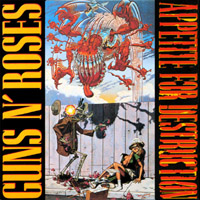
10. Guns N’ Roses, Appetite for Destruction
Appetite for Destruction is the first time an album listed in this article series is an album I was actually listening to that year. In 1985 I was too young and suburban to be aware of Hüsker Dü. Instead, I was listening to Mötley Crüe; it’s only with hindsight, not memory, that I now say New Day Rising was one of the best albums of that year, not Theatre of Pain. I banged my head all the way through 1986 and most of 1987, all the way through the release of Appetite that summer. I would have been a hesher, a metalhead, a guy who hung out with his friends blasting their car stereos, except none of us were old enough to drive.
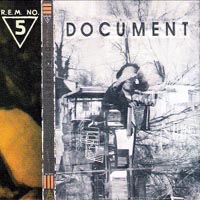
9. R.E.M., Document
Where 1986’s Life’s Rich Pageant is arcane and introverted, Document is poised for the stadium, though R.E.M. wouldn’t quite be ready for the JumboTron until 1988, with Green. The marker of their growth on this album is their audible confidence—vocals no longer muffled, the rich, detailed arrangements. These were the songs that introduced R.E.M. to the uncool, myself included.
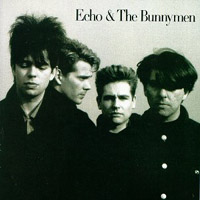
8. Echo & the Bunnymen, Echo & the Bunnymen
After a string of superb albums in the early ‘80s—Crocodiles, Heaven Up Here, Porcupine, and then nothing since 1984’s superior Ocean Rain—aside from recording songs for John Hughes soundtracks, Echo & the Bunnymen had gone M.I.A. That is, until their self-titled 1987 comeback, though it would be a brief return. Singer Ian McCulloch departed the band in 1988, drummer Pete de Freitas died in a motorcycle accident in 1989, and then in 1990 the remnants of the band squeezed a final album straight into the used bins. There are greater Echo & the Bunnymen albums, and since the band’s reformation in 1997, there have been newer ones, but there isn’t one that epitomizes the sound of Echo & the Bunnymen more.
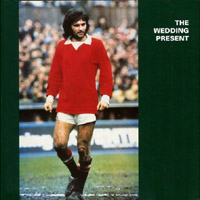
7. The Wedding Present, George Best
My dad loves Dave Brubeck’s Time Out, and the first time I heard the album was probably around 1987, when we listened to it on the way to the grocery store. The whole trip he pappity-tap-tapped out all the drum parts: the wheel was both snare and tom, parts of the dashboard were his cymbals, the horn was thankfully never used. Sensing my embarrassment, my father only began playing more animatedly, I mean really getting into it. Seven years later, on our driving trip out to California, he kept asking me to play this album, the one with “that guy who plays guitar really fast.” And then he showed off his air-guitar skills.
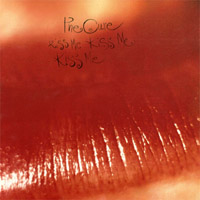
6. The Cure, Kiss Me, Kiss Me, Kiss Me
The Cure’s video for “Why Can’t I Be You,” the second single off Kiss Me, Kiss Me, Kiss Me, is awful, terrible, easily among the worst videos ever made. Even worse is the giant, vertical smile that opens on the chorus, which is pronounced “Why cuhnt I be you?” Oh right, I get it. Also, Robert Smith may be dressed like a bear. Well, maybe he’s supposed to be a cat. Hard to tell, but for sure he’s dancing around like a giant twat.
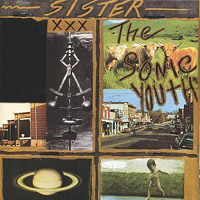
5. Sonic Youth, Sister
If you put all the Sonic Youth albums on a menu, Sister would have two chili peppers next to it—compared to EVOL, which would get three chili peppers (ouch? Yum?) or Confusion Is Sex, which would, inexplicably, get one banana. This is almost as accessible an album Sonic Youth has ever offered, but that’s relatively speaking in these parts.
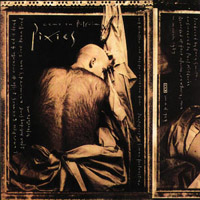
4. Pixies, Come on Pilgrim
Generalmente, intento evitar de ofrecer EPs en estas listas, porque se supone para ser los “mejor 10 albums” de cada año, y así que no he estado incluyendo cualquier cosa menos que la longitud de un álbum apropiado. El dura como 20 minutos (que es corto), pero hay ocho canciones (que está mucho). Aún 4AD (su etiqueta de registro) lo clasificó como “mini-album.” Se califica tan ciertamente para estar aquí.
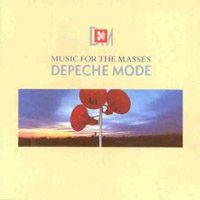
3. Depeche Mode, Music for the Masses
The culmination of a decade of synth-driven music, that spawned a tour that culminated in a capacity crowd of 60,000 at the Rose Bowl; that spawned the concert footage for 101; that spawned the band’s biggest album, 1990’s Violator; that spawned a thousand speedballs for singer Dave Gahan. Grandiose and theatrical, anthemic and lush, Music for the Masses is historic. Not that I noticed when it came out in the fall of 1987—but when I finally heard “Strangelove” on the radio that Christmas, that changed everything.
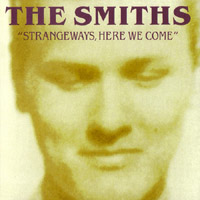
2. The Smiths, Strangeways Here We Come
The album that features “Girlfriend in a Coma,” the first song I ever heard by the Smiths—in January 1988—was also the band’s last: They broke up in August 1987. There would be no way I’d ever see them play live, no way I could anticipate their next single, camp out at the record store for a new album’s release. For me, whatever forthcoming material would bear their name (and there would be much) was, fittingly, reissued, repackaged, repackaged. For me, Strangeways Here We Come sealed their mythical status.
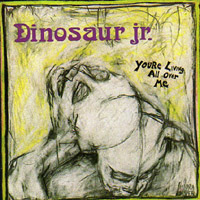
Album of the Year: Dinosaur Jr., You’re Living All Over Me
Without this album, new music would have by now ceased to exist. There’s just no other explanation. Inspiration would be only a faint memory, and we’d have to invent videogames that let us ape classic guitar rock riffs. But it is true that You’re Living All Over Me directly influenced practically every significant guitar-based movement afterwards. For example, while the Jesus and Mary Chain may have inaugurated shoegazing, this is the album that made it worth listening to. And what about the kind of mid-’90s indie-rock associated with Pavement and Built to Spill? That’s here too, as are generous portions of earlier ‘90s grunge and even later ‘90s emo. And that kind of influence does reveal some of this album’s greatness. Musicians of no small stature couldn’t help but try and emulate J. Mascis and whatever kind of crazy-future music he was concocting. I imagine you’ll see his influence through the rest of the albums in this series, and maybe beyond, all the way until the next ‘90s.

